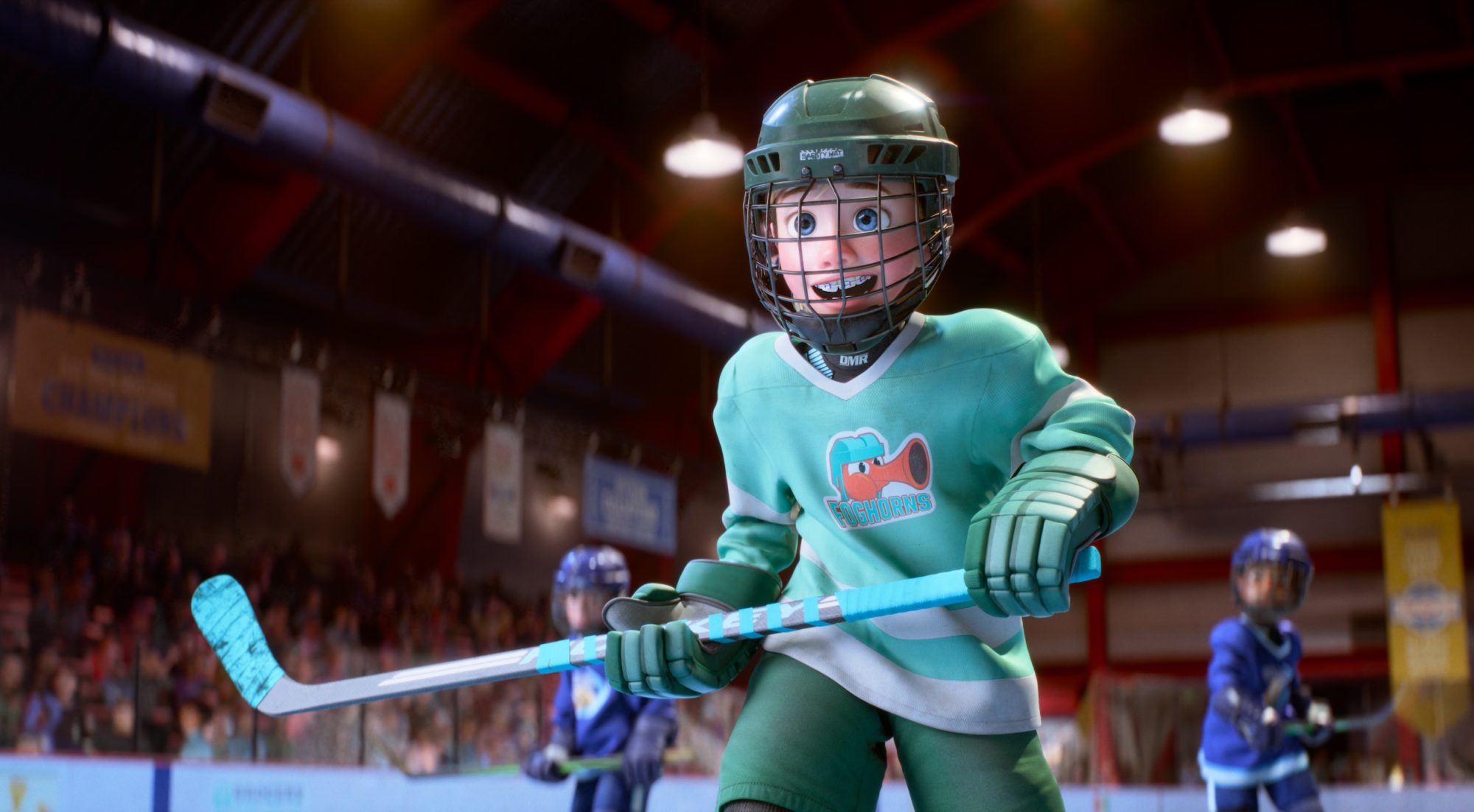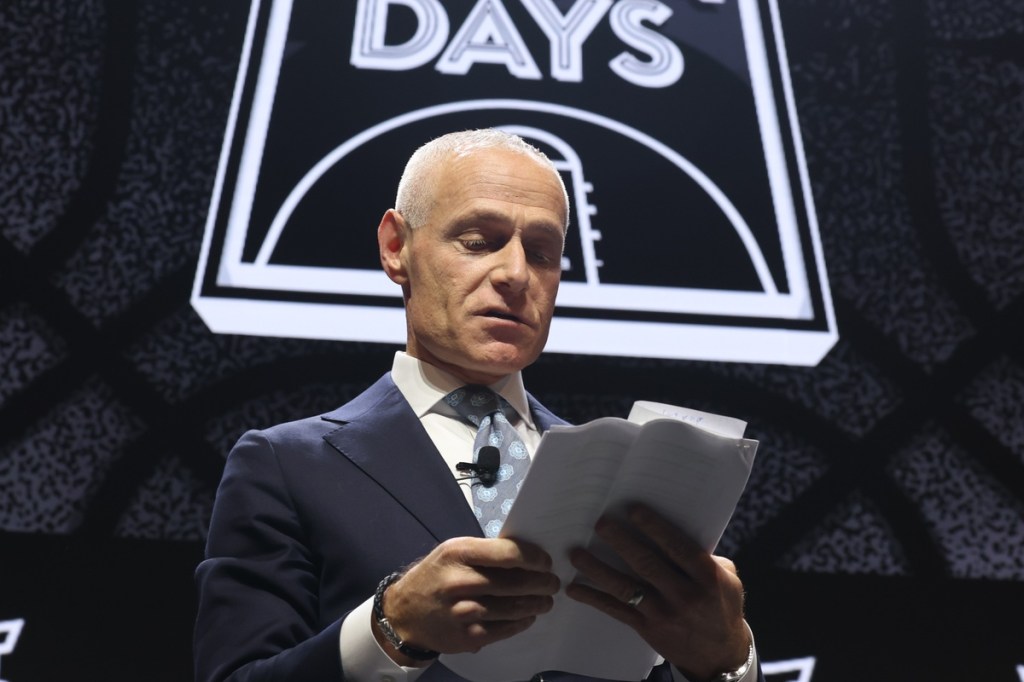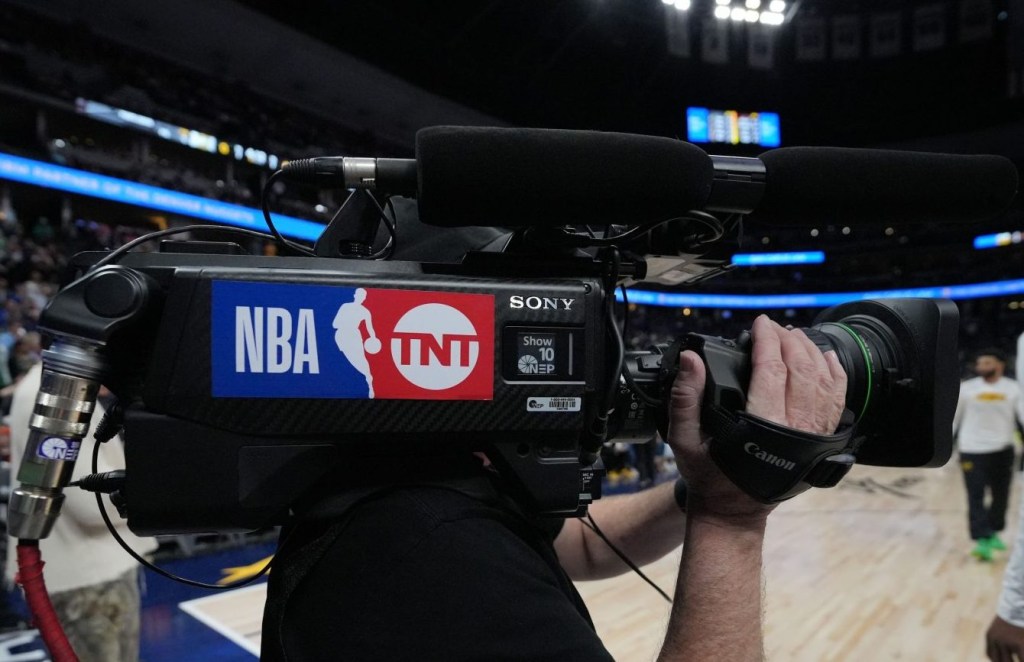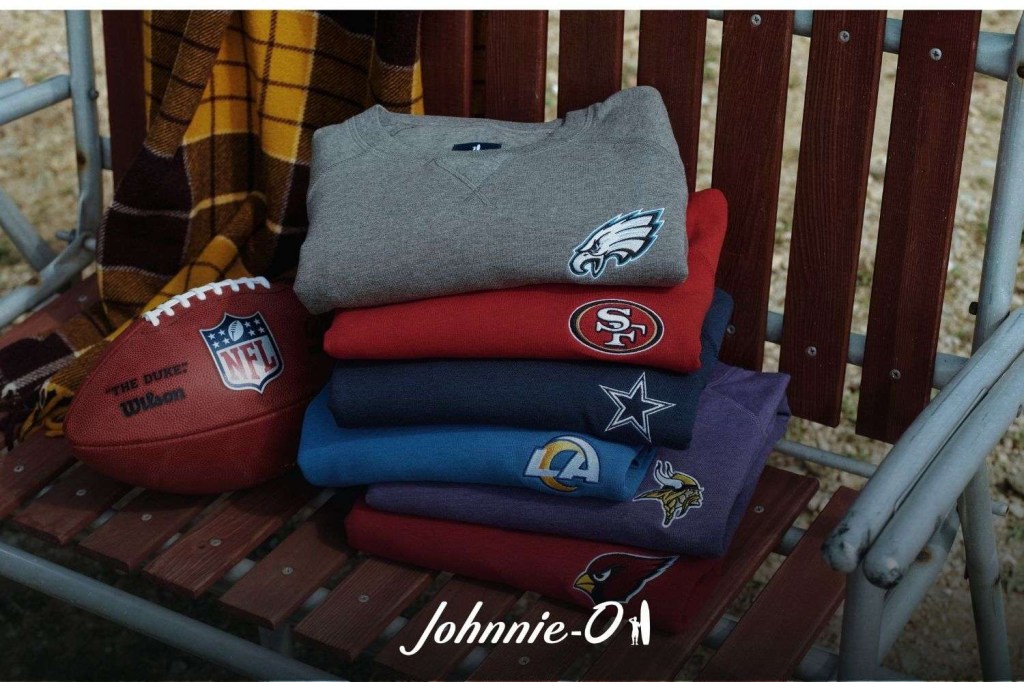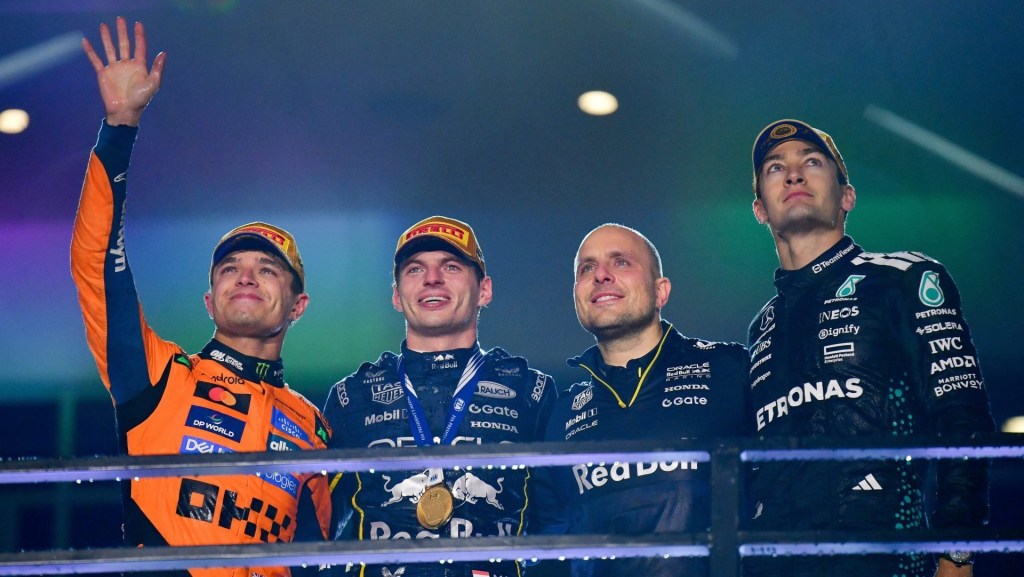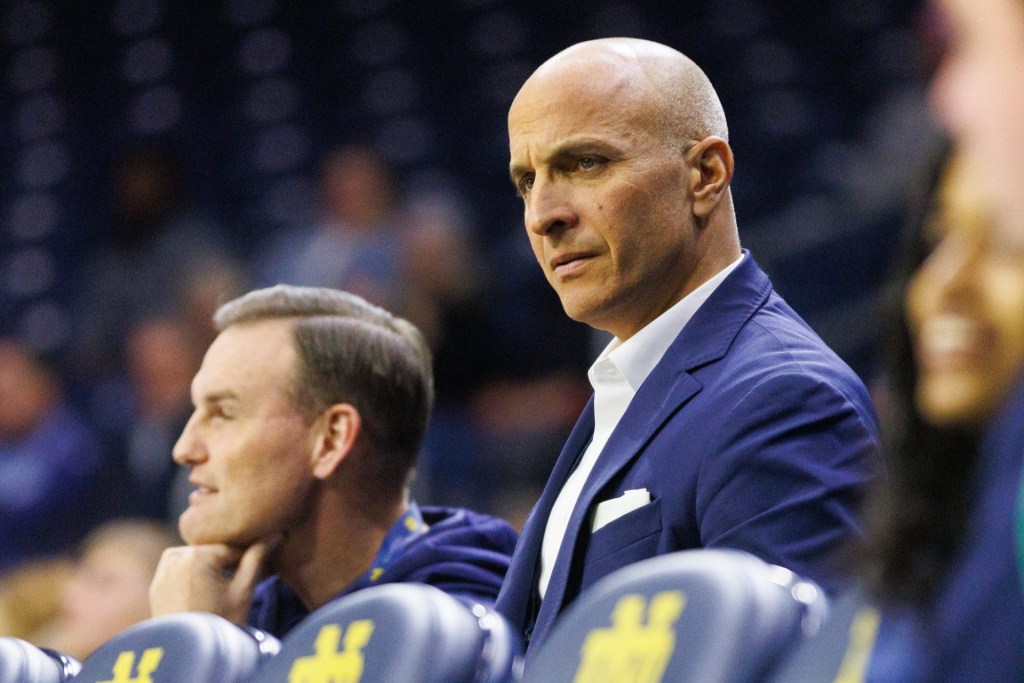Kendall Coyne Schofield remembers watching a particular movie from her childhood “a million and one times.”
The U.S. Olympic gold medalist and captain of the Walter Cup–winning PWHL Minnesota team tells Front Office Sports that The Mighty Ducks—which came out in 1992, the same year Coyne Schofield was born—stayed in rotation because she saw herself in the fictional hockey team’s few female players. She, too, was often the only girl on the ice on her own Illinois youth teams. The film, she says, made her feel like she “belonged.”
In the early 1990s, The Mighty Ducks put hockey in the limelight at an unprecedented scale; adjusted for inflation, the movie made nearly $132 million at the domestic box office. The middling fictional Ducks and their redemption story moved kids across the world to strap on skates and play. Now, a similar moment may be here for a new generation, with a pop culture frenzy that could blow The Mighty Ducks out of the water.
Disney Pixar’s Inside Out 2, about a 13-year-old female hockey player named Riley wrestling with the complex emotions of youth, premiered June 14. At an elite, three-day hockey camp, Riley navigates the high-stakes pressure of the competition while dealing with anxiety. An astounding number of people took the journey to the cutthroat camp with Riley: Inside Out 2 grossed $155 million in the U.S. on its opening weekend alone. As of June 24, the movie has made $728.6 million globally. It’s the biggest debut of any movie this year—the best since 2023’s Barbie—and recorded the second-best opening weekend of all time for an animated film, behind only Incredibles 2.
With its massive viewership, Inside Out 2 drives immense exposure for the sport that could replicate the spark that The Mighty Ducks ignited among would-be youth players. And with a female main character on the ice, the moment is especially pivotal for the girls game.
“I’m really excited to see how it kind of evolves over the next five, 10 years, to see some girls who, you’re going to ask them, ‘How did you start playing hockey?’” Haley Skarupa, a U.S. Olympic gold medal hockey player and NHL Foundation ambassador overseeing a new grant to grow girls hockey, tells FOS. “And they’re going to say, ‘Oh, I saw the Inside Out 2 movie.’” (The Mighty Ducks inspired Skarupa’s older brother to try hockey, and his eager younger sister followed.)
It’s not unreasonable to believe Inside Out 2 could provide a meaningful boost for the sport; a spokesperson for the NHL tells FOS the league saw girls hockey registration spike in its Learn to Play youth programs after the 2015 release of the film’s prequel. Compared to the prior season, the number of 8U girls (age 8 and younger) grew 10.9% in the U.S., and the number of 9U girls increased 7.7% in Canada, according to the league. USA Hockey (whose data includes Learn to Play participants) had a 13.32% registration boost from the year before for 6U, and a 9.09% increase from the year before among 7- and 8-year-olds.
When the first Inside Out movie debuted in 2015, the landscape of women’s professional hockey was drastically underfunded and fractured. Now, almost a decade later, girls are looking up to more than movies for inspiration.
The PWHL is coming off a record-breaking inaugural season, where it has proven time and again the enormous interest in the women’s game. The league broke the attendance record for a women’s hockey game six different times throughout the season, finally landing at 21,105 fans in Montreal in April. A total of 2.29 million Canadian viewers watched the league’s first game back in January.
“I grew up wanting to play in the NHL because that’s all I saw. And now girls can grow up wanting to play in the PWHL, and that’s a viable option,” Skarupa says. “Then having this movie to kind of tap into girls who’ve never heard of hockey or never tried it, now it’s just putting it on the map.”
Inside Out 2 is the best organic marketing campaign the PWHL could hope for. It’s not just the timing of the movie, but also its storyline: The events of the sequel revolve around hockey significantly more than the original. Plus, Disney Pixar recruited Coyne Schofield to voice an announcer in the movie, which she recorded remotely from Chicago.
“People are talking about how great the movie is. You’re seeing it breaking box office records. And I have to pinch myself, being like, ‘Wait, I’m in that?’” Coyne Schofield says. “I’m so honored they asked me to be a part of this.”
The girls’ ranks of the NHL’s youth programs get a lift anytime women’s hockey receives more visibility—whether it’s a box office hit, the Olympics, or the IIHF world championships—Rob Knesaurek, the NHL’s senior VP of community development and industry growth, tells FOS. These moments consistently pique interest among kids and drive them onto the ice, but Knesaurek says maintaining that momentum is the biggest challenge.
Steps big and small—like hiring more women coaches and making sure girls have their own locker rooms—can make a difference. In Detroit, he says, the NHL organized a skating party for a local girls team at the Red Wings’ arena, where each player had to bring a friend who had never tried hockey. Some Olympians showed up as a surprise, and every new girl registered for a spot in a Learn to Play program, he says.
Right now, girls generally make up about 18% to 20% of beginner-level Learn to Play programs in the U.S., while they account for about 40% of youth players in similar First Shift programs in Canada, according to Knesaurek. “I’m not going to be happy until I see a 50-50 split,” he says. “I want young girls to feel like this is a safe, accessible, and welcoming environment.”
The PWHL still has plenty of kinks to work out, including securing a wider broadcast reach in the U.S. But the serendipitous timing of the PWHL’s splashy debut and Inside Out 2’s smashing success is remarkable. The movie opened two weeks after the end of the first PWHL season, and shortly before teams will get their official names and logos.
“You can’t not notice women’s hockey at this point in time,” Jayna Hefford, the PWHL’s senior VP of hockey operations who has four Olympic gold medals of her own, tells FOS. “It feels like it’s this sort of snowball of momentum around our sport.”
Whether the one-two punch of Inside Out 2 and the PWHL delivers the growth many in the sport hope for—and even expect—girls and women’s hockey is growing, and fast.
The total number of female players in the USA Hockey system reached 93,610 in the 2023–24 season, when it sat at 67,230 a decade before, according to data provided to FOS. The total number of male players is still far higher, but the organization recorded a bigger increase during that time period on the women’s side, with 7,709 more female players than male players joining since the ’13–14 season.
“I think it has been a massive year. And I don’t think we will truly be able to understand the impact until years down the road,” Coyne Schofield says. “The impact is felt among our society—not just maybe those young girls whose dreams are now becoming a reality, but it’s also the equality that we’ve pushed for so often of a young girl and young boy having the same dream.”
